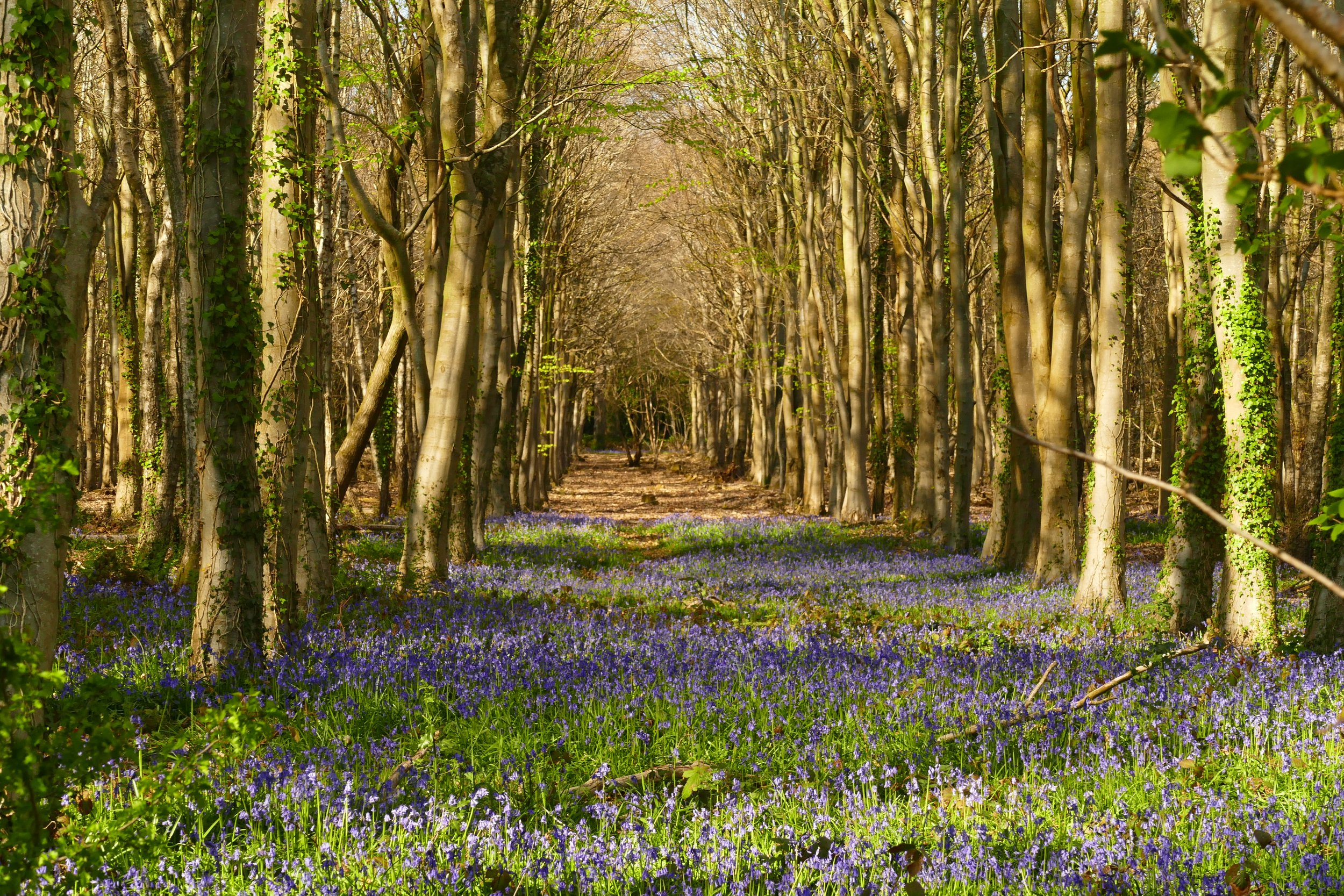West Dean Woods
Chichester
Children will enjoy the wild daffodil grove and hunting for the giant chalk balls hidden along this walk.
One of the giant chalk boulders hiding on this walk
The Basics
Time: 1 hr 50 mins (25 mins to the daffodils)
Distance: 6 km
Terrain: Woodland paths with some steep sections and two kissing gates. Very small sections on quiet country lanes.
Pushchair: Not for the full loop, but an all terrain pushchair could manage a bumpy ride as far as the daffodils and back
Dogs: On leads to protect the reserve
Refreshments: None, although The White Horse in Chilgrove is a short drive from the start point
Toilets: None
Public Transport: There is no public transport on this walk
Parking: Very limited parking at the side of the road on a grass verge just south-east of Staple Ash Farm, opposite a sheep field and just before a sharp bend (Postcode: PO18 9NB - W3W: dupe/driveway/cropping)
The walk passes through a mixture of woodland
Truly wild daffodils are becoming increasingly less common, so this flourishing patch is rather special. You will find it on this lovely woodland walk on the West Dean Estate.
The Route
Take the bridle path through the gate leading away from the road, just south-east of Staple Ash Farm, opposite a sheep field and before the sharp bend in the road. It should be signed as West Dean Estate. Continue along the path with hedges on either side as it gradually ascends to meet woodland. The hedges will give way to twisted hazel wood fencing. Look out for your first chalk ball (see below).
Along this path in March, you will come to a fine display of wild daffodils. Most of them are growing inside a restricted area of the nature reserve with no public access. You must stick to the path, but you do get a good view of them from over the fence where there are some logs to stand or sit on.
The area where the daffodils are is also marked by a chalk ball on a flat grassy area to your left. Continue along the path and keep your eyes out for the next chalk ball which has split down the middle. Take the path to the right of this cleaved ball path heading off through a young pine tree planation. This should be the first time you divert from the main path since starting the walk.
This path will take you along a plantation of conifers and you should head for two tall pines acting like gateposts at the dip of a hill. Go between the two tall trees to enter the established woodland.
Follow the bridleway straight ahead, rising steeply. Continue to ignore all forestry paths to the left and the right and stick with the well signed bridle path. Continue straight across at the meeting of a number of forestry tracks and a large log pile. Shortly after this, you should the look out for a finger post pointing to your left.
Follow the bridleway out of the woodland until the next finger post which is beside the fence and another chalk ball. It will direct you to the right. Very shortly you will come to another junction where a view of the downs is visible ahead. Turn right here and then stay on this path as it heads back into the pine woodland.
Keep on this path for some time through the mossy pines until you come to another wide forestry track crossing the path and a log on your left that would make a good resting bench. Cross the forestry track and take the narrow bridleway straight ahead, returning to native woodland once again.
Keep on the path as it gradually descends, passing a forestry workers area. Ignore all paths to the left and right and the path will eventually open up to fields and a distant cottage on your left and log piles to your right. Keep going straight along the access track until it leads you through a gate and onto a road.
Turn right at the road and then very soon leave the road (opposite another chalk ball) to take the footpath on your left going up hill and then through a metal kissing gate. Cross the field and on the other side you will return through another kissing gate to the lane where you parked your car (look out for your last chalk ball). Follow the lane to your left and you will arrive back at your car.
We suggest viewing the interactive map below as a ‘Trails Map’ to ensure all the paths are displayed:
Did you know?
Andy Goldsworthy’s chalk balls were placed along this route as an art installation and are intended to degrade over time, slowly disappearing into the landscape from which they came. There are 14 of them along a trail stretching from Cocking Hill to West Dean Gardens.
The true genetically undiluted Wild Daffodil, Narcissus pseudonarcissus, was once a common plant but is significantly declining due to agricultural improvement of meadows and mismanaged woodlands. This patch is therefore rare and special.
We are passionate about keeping The Ambling Path as a free resource available to everyone, forever. If you have enjoyed using our walking guides, then please consider leaving us a donation. This will help to cover our costs as well as rewarding the considerable time and effort needed to maintain the site. Thank you.

























